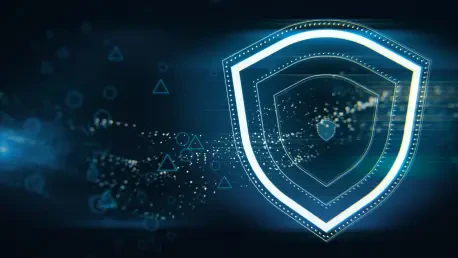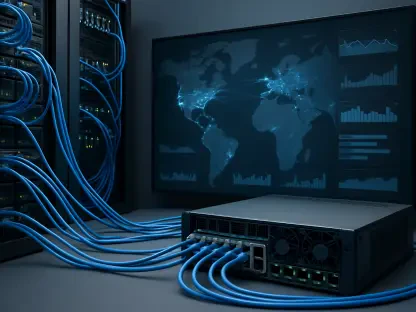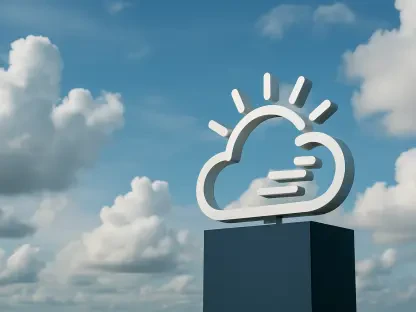In the rapidly evolving field of cybersecurity, staying ahead of potential threats is crucial. Matilda Bailey, a knowledgeable networking specialist with a focus on cellular, wireless, and next-gen solutions, shares her insights on the recent security enhancements made by Trend Micro. The conversation explores themes such as vulnerability management, critical-severity flaws, and the importance of prompt patch application.
What recent actions has Trend Micro taken to address security vulnerabilities?
Trend Micro has been proactive in patching security flaws by releasing updates for their products. They’ve addressed ten vulnerabilities in Apex Central and Endpoint Encryption PolicyServer, which include several critical-severity issues that could lead to remote code execution. Patching such vulnerabilities is critical in preventing potential exploitation and safeguarding user data.
How many vulnerabilities have been patched in Apex Central and Endpoint Encryption PolicyServer?
Trend Micro has patched a total of ten vulnerabilities across these two systems. Specifically, Apex Central saw the resolution of two critical bugs, while Endpoint Encryption PolicyServer received fixes for eight flaws, which include both critical and high-severity defects.
What are the critical-severity vulnerabilities affecting Apex Central?
The critical vulnerabilities in Apex Central revolve around insecure deserialization operations, which can lead to remote code execution. Two prominent issues, tracked as CVE-2025-49219 and CVE-2025-49220, pose significant risks by allowing attackers to execute arbitrary code without authentication.
Can you describe the nature of the vulnerabilities tracked as CVE-2025-49219 and CVE-2025-49220?
These vulnerabilities concern insecure deserialization. Essentially, it’s a process where data is fetched in a format that can be manipulated by an attacker. The flaws enable unauthorized execution of code, potentially compromising the affected systems severely by providing access to malicious actors.
What is insecure deserialization, and why is it a problem in this context?
Insecure deserialization occurs when an application misinterprets data and processes it suspiciously, enabling attackers to tamper with application logic or execute unwanted code. In the case of Apex Central, this could lead to remote code execution, making it a crucial flaw to address urgently.
How does the critical vulnerability, CVE-2025-49220, compare to the others found in Apex Central?
CVE-2025-49220 is a glaring example of insecure deserialization similar to CVE-2025-49219 but discovered through a different method. Both share a critical CVSS score of 9.8 and pose equal risk in terms of remote code execution threats, underscoring the necessity for patches.
How many vulnerabilities have been addressed in the Endpoint Encryption PolicyServer?
Endpoint Encryption PolicyServer had eight vulnerabilities patched, encompassing both four critical and four high-severity flaws, showcasing a comprehensive approach to fortifying the system against diverse security threats.
Can you explain what the critical issues in the PolicyServer involve?
The critical vulnerabilities mainly center on deserialization of untrusted data and authentication bypass. They allow unauthorized remote code execution and access to admin-level controls, potentially granting attackers the ability to alter configurations and elevate system weaknesses.
What risks are associated with the vulnerabilities CVE-2025-49212, CVE-2025-49213, and CVE-2025-49217?
These vulnerabilities present risks similar to those in Apex Central, mainly concerning deserialization issues leading to unauthenticated remote code execution, which can severely compromise security for users of the PolicyServer.
What critical-severity vulnerability is identified as CVE-2025-49216, and what does it allow an attacker to do?
CVE-2025-49216 is an authentication bypass vulnerability. It allows an attacker to access key admin methods, effectively modifying product configurations and undermining security protocols, making it an urgent issue for administrators to address.
What is the significance of an authentication bypass vulnerability?
Authentication bypass allows attackers to gain access to system functions as if they were trusted users. This can lead to unauthorized control of configurations, data manipulation, and further exploitation of system vulnerabilities.
How do the high-severity flaws in Endpoint Encryption PolicyServer differ from the critical ones?
The high-severity flaws, while serious, require a prerequisite state wherein attackers can execute low-privileged code first. This contrasts with the critical issues, which offer more direct routes to exploitation without such conditions being met.
Can you describe what an SQL injection bug might enable an attacker to do?
SQL injection bugs allow attackers to manipulate a database query, potentially leading to unauthorized access to sensitive data, alteration or deletion of database entries, and privilege escalation within the system.
What conditions must be met for an attacker to exploit the high-severity flaws in PolicyServer?
Attackers must initially obtain the ability to execute low-privileged code on the target system to exploit high-severity flaws. This often involves bypassing perimeter security measures before escalating privileges through vulnerabilities like SQL injection.
What role does the Zero Day Initiative (ZDI) play in relation to these vulnerabilities?
The Zero Day Initiative is instrumental in discovering and disclosing vulnerabilities before public exploitation. It provides vendors with crucial information to develop patches, ensuring systems are secured before attackers can take advantage.
Have any of these vulnerabilities been known to be exploited in real-world scenarios?
At this time, Trend Micro asserts that none of these specific vulnerabilities have been observed to be exploited in the wild, emphasizing the importance of preventative action through timely patch application.
Why is it important for users to apply the available patches promptly?
Installing patches promptly is vital to protect systems against potential exploits. Vulnerabilities, once discovered, can be swiftly weaponized by attackers if not addressed. Timely updates ensure the system’s defenses remain robust against newly identified threats.
How do these vulnerabilities in Trend Micro products compare to those recently patched by other companies like Palo Alto Networks or Fortinet?
Trend Micro’s vulnerabilities are notably severe, akin to those patched by other security providers like Palo Alto Networks and Fortinet, reflecting a shared industry challenge in addressing security flaws that could lead to privilege escalation and remote code execution.
Could you highlight some related security patches addressed by other companies, such as Microsoft or Siemens?
Microsoft recently addressed a WebDAV flaw marked as ‘Already Exploited’, showcasing the immediacy with which some vulnerabilities can affect systems. Meanwhile, Siemens and others in critical sectors consistently patch vulnerabilities to uphold network integrity and safeguard operational continuity.









